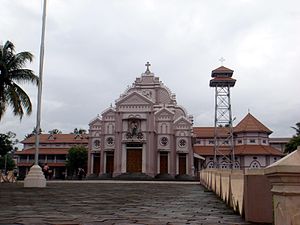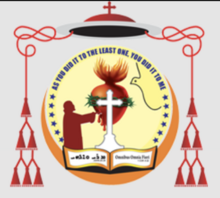
The Syro-Malabar Church, also known as the Syro-Malabar Catholic Church, is an Eastern Catholic Church based in Kerala, India. It is a sui iuris (autonomous) particular church in full communion with the Holy See and the worldwide Catholic Church, with self-governance under the Code of Canons of the Eastern Churches (CCEO). The major archbishop presides over the entire church. The incumbent Major Archbishop is Raphael Thattil, serving since January 2024. The Syro-Malabar Synod of Bishops canonically convoked and presided over by the major archbishop constitutes the supreme authority of the church. The Major Archiepiscopal Curia of the church is based in Kakkanad, Kochi. Syro-Malabar is a prefix reflecting the church's use of the East Syriac Rite liturgy and origins in Malabar. The name has been in usage in official Vatican documents since the nineteenth century.

The Archeparchy of Changanacherry is a Syro-Malabar Catholic archeparchy with an area of 24,595 km2 comprising the districts of Kottayam, Alappuzha, Pathanamthitta, Kollam, and Thiruvananthapuram in Kerala, and also Kanyakumari district in Tamil Nadu. It is one of the largest Catholic dioceses in India in terms of area. Joseph Perumthottam is the current Metropolitan Archbishop, serving since 2007. Thomas Tharayil has been the auxiliary bishop since 2017. Suffragan eparchies of the Changanassery archeparchy includes Palai, Kanjirappally-Nilackal, and Thuckalay-Thiruvithancode.
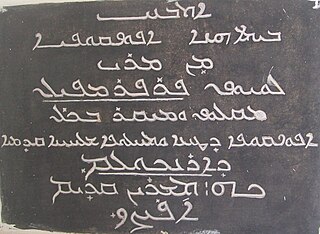
The Archeparchy of Ernakulam–Angamaly is the major archeparchy and the see of the Major Archbishop of the Syro-Malabar Catholic Church. It has been the major archeparchy since 1992 when the Syro-Malabar Catholic Church was elevated to the status of a major archiepiscopal church with Ernakulam-Angamaly as the primatal see. The major archbishop of Ernakulam-Angamaly is the main bishop of the jurisdiction, at the same time the head of the Syro-Malabar Catholic Church. The eparchies of Kothamangalam and Idukki are the two suffragan eparchies of the major archeparchy.
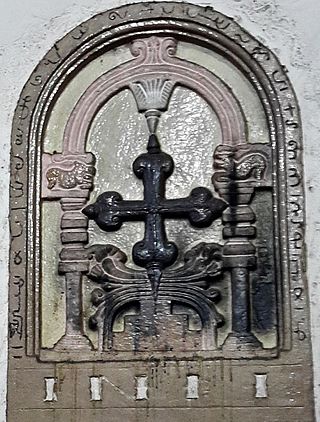
The Chaldean Syrian Church of India is an Eastern Christian denomination, based in Thrissur, in India. It is organized as a metropolitan province of the Assyrian Church of the East, and represents traditional Christian communities of the East Syriac Rite along the Malabar Coast of India. It is headed by Mar Awgin Kuriakose.

The Archeparchy of Trichur, in Thrissur District of Central Kerala, India, with nearly half a million Syro-Malabar Catholics now, used to be the largest Catholic diocese in India when it included the Syro-Malabar Catholic Diocese of Irinjalakuda until 1978 and Syro-Malabar Catholic Eparchy of Palghat until 1973. Syro-Malabar Catholic Diocese of Irinjalakuda, also located in Thrissur District, has over a quarter million Syro-Malabar Catholics now. Syro-Malabar Catholic Diocese of Palghat in Central Kerala extends to some regions in the neighbouring state of Tamil Nadu. In 2010, the parts of Tamil Nadu under the Syro-Malabar Catholic Diocese of Palghat were separated to form another Syro-Malabar Catholic Diocese of Ramanathapuram.
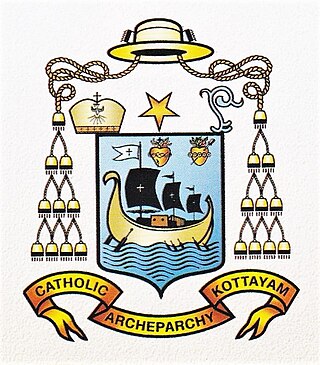
The Archeparchy of Kottayam is a Syro-Malabar Church metropolitan archeparchy of the Catholic Church in India. The archeparchy is exclusively for Knanaya faithful who claim to be the descendants of Syriac Judeo-Christians who migrated from South Mesopotamia to Kodungallur (Muziris) in South India in 4th century A.D.

This is a timeline of the history of the Syro-Malabar Catholic Church in India.

The Archdiocese of Verapoly (Verapolitana) is a Latin Church ecclesiastical territory or archdiocese of the Catholic Church, composed of Latin Catholics of Malabar and headquartered at the city of Cochin, in the south Indian state of Kerala. The archdiocese has administrative control over the suffragan dioceses of Calicut, Cochin, Kannur, Kottapuram, Sultanpet and Vijayapuram. The headquarters is located in Kochi along the Malabar Coast in India. It was originally formed as the Vicariate Apostolic of Malabar in 1657 and became a metropolitan see in 1886. Verapoly is the anglicised name of Varapuzha.

Palayur Mar Thoma Major Archiepiscopal Church, is located at Palayur, in Thrissur district in Kerala on the west coast of India. According to Saint Thomas Christian tradition, the Syrian church was established in 52 AD by St Thomas, one of the twelve apostles of Jesus Christ. Saint Thomas performed the first baptism in India here, therefore this church is called an Apostolic Church credited to the apostolate of St. Thomas, who preached and also introduced Christianity to the people here. It is part of the Ēḻarappaḷḷikaḷ that he established in India, the others being at Cranganore, Kokkamangalam, Kottakkavu, Kollam, Niranam, and Chayal (Nilackal). The original small church structure has been retained at the original site. But substantial improvements around it were carried out during the 17th century by Giacomo Fenicio as necessary, without sacrificing the main sanctity of the place.

Parambil Chandy was a bishop of the Catholic Saint Thomas Christians. He is also the first known native Indian bishop.

St. Thomas Cathedral is the Syro Malabar Catholic cathedral of the eparchy of Irinjalakuda in India. It presently exists under the nomenclature and the Canonical Status as Cathedral in the Wake of the Origin of the New Eparchy, effected by the amalgamation of the two independent and important parishes of the locality, namely, St. George’s Forane Church and St. Mary’s church, which were amicably situated side by side for about a century.

The Saint Thomas Christian denominations are Christian denominations from Kerala, India, which traditionally trace their ultimate origins to the evangelistic activity of Thomas the Apostle in the 1st century. They are also known as "Nasranis" as well. The Syriac term "Nasrani" is still used by St. Thomas Christians in Kerala. It is part of the Eastern Christianity institution.

Raphael Thattil is an Indian prelate of the Catholic Church who serves as the Major Archbishop of the Syro-Malabar Church, the largest Eastern Catholic Church and as the Metropolitan Archbishop of Ernakulam-Angamaly since January 2024.
St. Joseph Church, Aloor is a parish of the Syro-Malabar Catholic Church in Aloor. It was the first parish church in Aloor Muri of the Mukundapuram and Kodassery taluks. Aloor parish is one of the 83 parishes between the Bharathappuzha and Periyar rivers, during the erection of syro-Malabar hierarchy and Trichur Vicariate.

The Syro-Malabar Catholic Eparchy of Hosur-Mylapore is an Eastern Syriac Catholic eparchy headquartered in Tamil Nadu, India, under the Syro-Malabar Catholic Church. It was established by Pope Francis on 10 October 2017, and Mar Sebastian Pozholiparampil was appointed its first bishop. The cathedral is St. Antony's Syro-Malabar Catholic Cathedral Church at Noothenchery and the bishop's chancellory is at St. Thomas Pastoral Centre Ayanavaram.
Angamāly Padiyōla is a historic declaration of the Syrian Catholic/ Syro Malabar (Paḻayakūṟ) Saint Thomas Christians proclaimed in 1787 at the Great Church of Saint George in Angamāly. This document made a strong appeal to the pope for the consecration of a native bishop for the community and demanded autonomy for their Church which was forcibly brought under the Latin Church's jurisdiction.

The Paḻayakūṟ, also known as Romo-Syrians or Syrian Catholics of Malabar, are the East Syriac denominations of the Saint Thomas Christian Church, which claim ultimate apostolic origin from the Indian mission of Thomas the Apostle in the 1st century AD.
